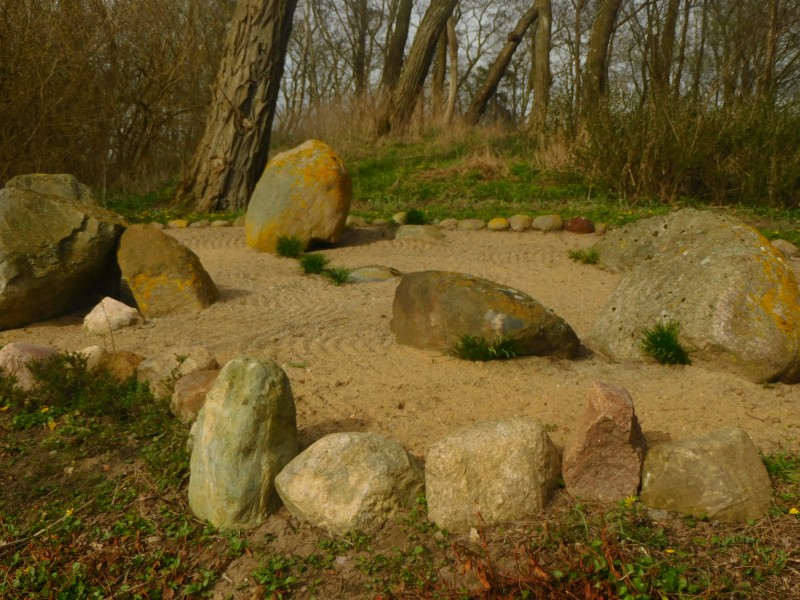
This and all subsequent photos by Ferdinand Liefert
Look at the picture above. Is it a Zen garden with raked sand and rocks arranged in an enigmatic pattern to represent islands in an ocean of nothingness? Or is it a Shinto circle of ‘iwakura’ (sacred rocks), such as are found along the Inland Sea where ancestral ‘gods’ gather for discussion?
Now let’s take a look at another picture, below, featuring two simple objects. One is a blue happi, adorned with the triple tomoe of Shinto with the kanji for matsuri. It’s typically worn by participants at Shinto festivals, such as the saké-fuelled men who carry the mikoshi (portable shrine. In front of it is container of four parts used for food – rice, soup, pickles and vegetable. It’s characteristic of Zen, used by monks in training when they eat a minimum of nutritious food while doing zazen meditation. Food and festival – meditation and procession. Are the two exhibits complementary or in conflict?
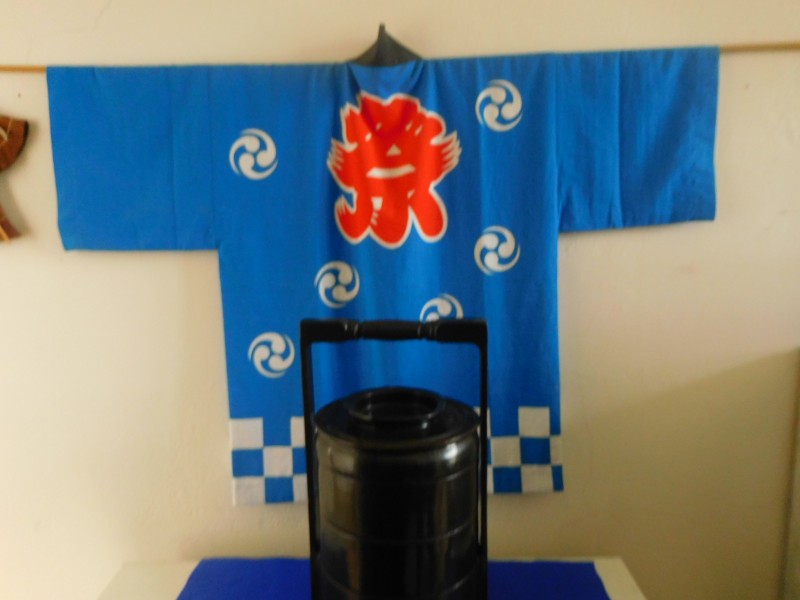
The combining of Zen and Shinto here comes surprisingly not from Japan – but Germany. It’s from an intriguing creation by Johann Radeloff which Green Shinto reader Ferdinand Liefert came across in northern Germany. He writes:
I visited a quite unique place called Mitsuko castle, where the artist Heinrich Johann Radeloff created a space, where German and Japanese culture meet. So do Zen and Shinto, there! Heinrich Johann Radeloff has been a professor in Kyoto for many years and his wife is a descendant of the Tokugawa family. In this “castle”, which is more a kind of mansion, they display a variety of Japanese and German cultural goods.
Inside, one can also find gifts from the Daitoku-ji and an installation created by Mr. Radeloff, which is nothing else but a shrine. Outside one can find the German-Japanese-grove, where one can also find a mixture of Japanese and Western cultural influences. E.g., there are torii standing in the grove, also one can find a rock garden or stones from slavic stones.
The website for Schloss Mitsuko, which is in German, reveals that the castle was built in 2001 near Teterow in Mecklenburg. The originator, Johann Radeloff, was born in 1931 and was active in Kyoto from 1964 until around the end of the century. From what he writes, I take it that he practised zazen and was inspired in his art by Japanese aesthetics. The building was once a manor house, and the garden has been converted into a grove is described as a symbiotic combination of Japanese elements with the local landscape and nature. It has since become a cultural exchange centre, housing Japanese-German art exhibitions and concerts.
In his fusion of Zen and Shinto, Radeloff has captured much of the essence of traditional Japanese spirituality. The beauty of form, the harmony with nature, and the treasuring of transience lie at its core. In his conversion of a German mansion into a Zen-Shinto fusion, Radeloff has produced a work that is at once artistic and spiritual. It’s a fitting tribute to the genius of traditional Japan.
****************
With thanks to Ferdinand Liefert for drawing attention to this project.
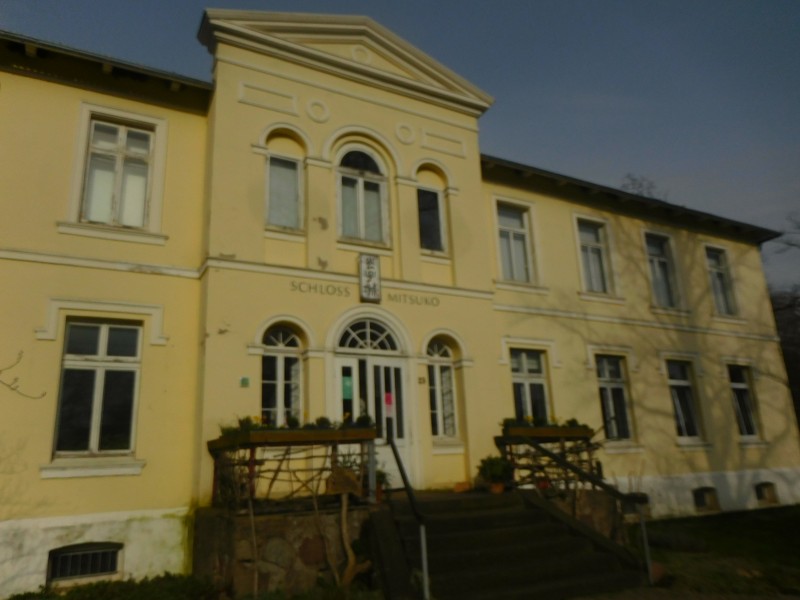
Castle Mitsuko, converted from a German manor
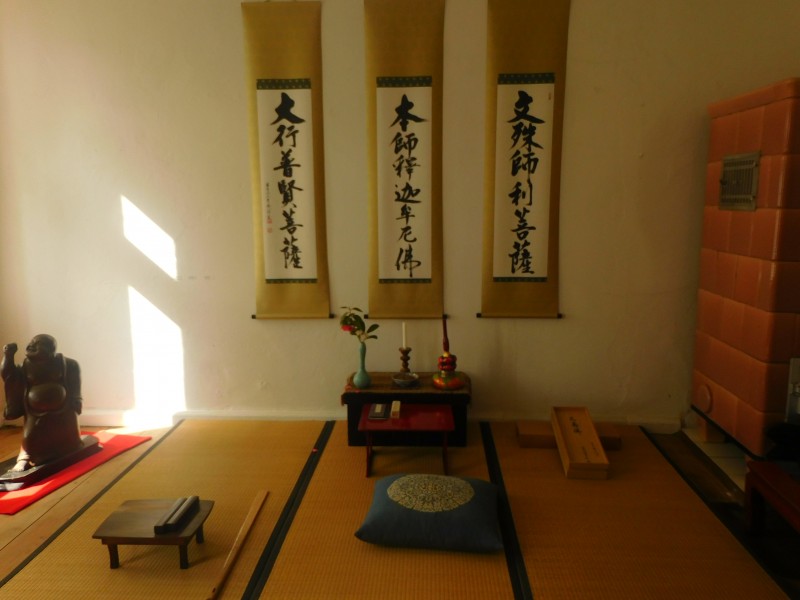
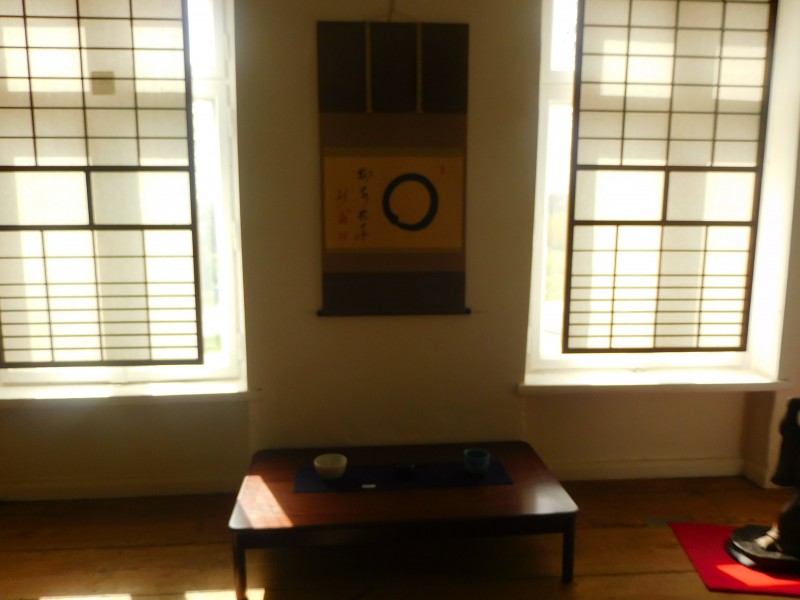
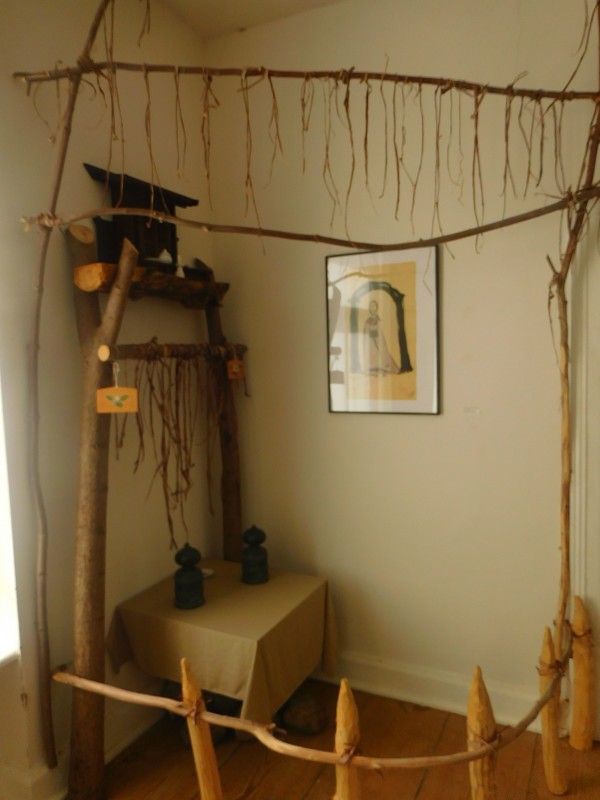
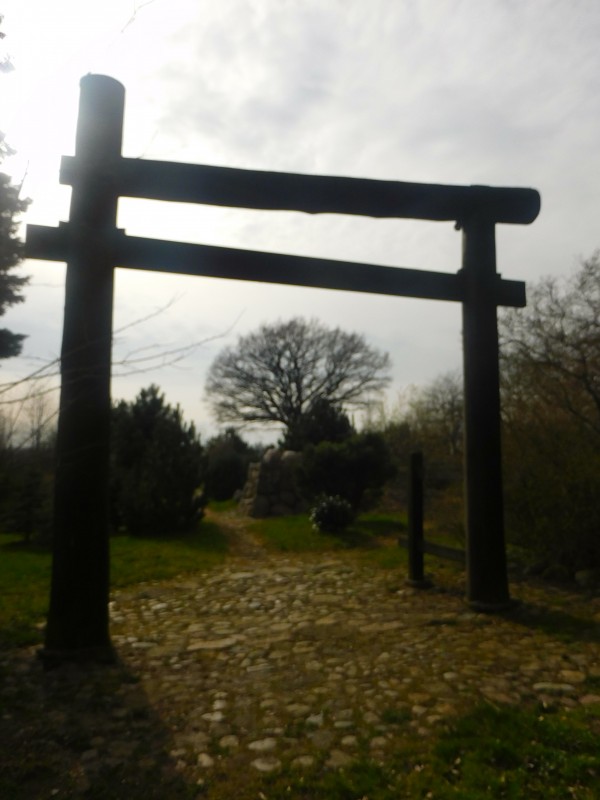
An unfinished torii, expression of the Japanese aesthetic of mikansei (incompleteness), the suggestion being that the project will be on-going in the search for perfection.

Leave a Reply